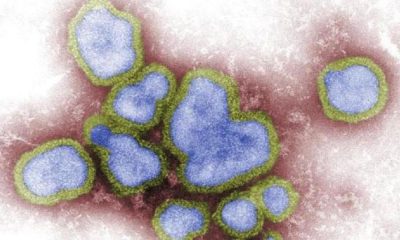Reviews
BPD in Simple Words: Understanding Symptoms, Diagnosis, and What Comes Next

Borderline Personality Disorder (BPD) is one of the most misunderstood mental health conditions. It is about emotional depth, sensitivity to rejection, and an ongoing struggle to feel safe in relationships, even with yourself.
People who may have BPD know that something feels off. Emotions feel overwhelming or unpredictable, relationships swing between closeness and conflict, and a stable sense of self can seem just out of reach. That’s why a deeper understanding matters. In this article, we’ll explore what BPD really is, how it’s diagnosed, and what borderline personality disorder treatments actually help. If any of this resonates with you, read on.
What Is Borderline Personality Disorder (BPD)?
BPD is a complex mental health condition defined by profound emotional instability, a shifting self-image, and intense, chaotic interpersonal relationships. It has distinguishing patterns, runs deep, and begins early in life.
It is no wonder that more people have started to take online quizzes. Online evaluations, like the one from Breeze https://breeze-wellbeing.com/borderline-personality-disorder/, can help you explore symptoms and emotional cues missed in typical self-help materials. It might be better to receive personalized feedback than to navigate overwhelming data online by yourself.
Data from the National Center for Biotechnology Information estimates that up to 2.7% of adults meet the criteria for BPD and show first symptoms in early adulthood. That number fluctuates and can be even higher due to frequent misdiagnosis or underreporting. Therefore, taking an online test can be a first step to getting a professional assessment.
Understanding the DSM-5 Criteria
The DSM-5 (Diagnostic and Statistical Manual of Mental Disorders) is the standard guide clinicians use to diagnose mental health conditions, and BPD is officially listed in it under personality disorders. Clinicians use nine main criteria to assess BPD. A diagnosis is typically made when five or more symptoms are consistently present. Here’s how they translate outside clinical language:
- Emotional dysregulation. You may feel like your emotions hit too hard and shift too fast from joy to despair in minutes.
- Fear of abandonment. Even small separations (like a delayed text) can trigger panic that people are leaving you for good.
- Unstable relationships. Intense, fast-moving relationships where you idealize someone one moment and feel betrayed the next.
- Identity disturbance. Feeling unsure of who you really are. It’s okay to question your values, goals, or even preferences. But you may need to reflect more if they change depending on who you’re with.
- Impulsivity. In areas that can be self-damaging: reckless spending, substance use, binge eating, or unsafe sex.
- Recurrent suicidal behavior or self-harm. These may appear as intense responses to emotional pain or fear of rejection.
- Chronic feelings of emptiness. A sense that something is always missing, no matter how much you distract or achieve.
- Inappropriate, intense anger. Explosions that come quickly and feel uncontrollable, or are tied to feeling misunderstood or hurt.
- Paranoia or dissociation under stress. Feeling detached from reality or suspicious of others’ intentions during emotional crises.
What BPD Feels Like from the Inside
Living with BPD may feel like you don’t know who you are, or like your emotions hijack your ability to think clearly. Some people who exhibit borderline signs have nervous systems wired for heightened emotional sensitivity and threat detection. Neuroscience research shows that areas like the amygdala (the brain’s fear center) can be overactive in BPD, while the prefrontal cortex (which helps regulate emotions) may be underactive. This combination creates a constant state of emotional intensity and reactivity.
Emotional dysregulation makes emotions surge quickly, unpredictably, and with overwhelming force in response to subtle triggers others might not notice. You might cognitively know the situation isn’t life-threatening, but your body reacts as if it is.
One person with BPD might fear that people would leave, even when their actions reassured them. A canceled dinner could spiral into panic, shame, or anger. Do they try to control somebody? Not consciously. Their nervous system simply can’t register safety or stability in the relationship.
To outsiders, this emotional intensity can seem manipulative or overblown. Partners and friends may pull away, misinterpreting dysregulated reactions as drama or control. But what looks like manipulation is often a desperate attempt to feel secure, to get reassurance in a moment when fear feels unbearable. Sadly, this may reinforce the very abandonment someone with BPD fears the most.

How to Get Diagnosed With BPD
Whether you start with a general practitioner (GP), a licensed therapist, or a psychiatrist, the first step is reaching out. That’s what the National Health Service, the official representative of the health government in the UK, recommends.
The goal of the diagnostic process isn’t to “label” you but to help you understand how your brain and emotions function. This insight will then show you how to build a healthier way forward.
What the Assessment Involves
Diagnosing BPD typically involves:
- Clinical interviews, in which a mental health professional examines your emotional history, behavior patterns, and interpersonal dynamics, are commonly used to diagnose BPD.
- Structured tests that examine characteristics like impulsivity, emotional dysregulation, identity confusion, and interpersonal conflict include the Borderline Symptom List (BSL-23) and the Structured Clinical Interview for DSM-5 Personality Disorders (SCID-5-PD).
- Not a single visit, but several sessions. In order to make sure the diagnosis accurately reflects your long-term experience, your clinician will probably want to look for trends over time and rule out other conditions.
You’ll also talk about your attachment styles, coping mechanisms, and any traumatic or ongoing invalidation experiences that might be influencing your feelings. Perfect language and total self-awareness are not necessary. Just be honest first.
Why BPD Can Sometimes Be Misdiagnosed
BPD is one of the most misunderstood and misdiagnosed mental health conditions. 40% of people with the official BPD diagnosis have been misdiagnosed before this. Some people are first told they have:
- Anxiety disorders
- Major depression
- Bipolar II disorder
- Complex PTSD (C-PTSD)
While these conditions can overlap with BPD, they don’t fully explain the combination of emotional reactivity, unstable self-image, and relational intensity that BPD involves.
Gender bias is one factor contributing to misdiagnosis. According to research in the Frontiers of Psychiatry, men who exhibit similar symptoms may be diagnosed with substance use disorders or antisocial traits, but women are more likely to be diagnosed with BPD. This distorted perspective results in stigma and lost chances for recovery.
Another important factor is prejudice against BPD in society. Despite compelling evidence that Dialectical Behavior Therapy (DBT) and other interventions are highly effective, clinicians may be reluctant to diagnose BPD because of its reputation as “difficult to treat.” People consequently move through ineffective borderline personality disorder treatments for years. It is possible to change the focus from blame to support by realizing that BPD has neurological roots and is very treatable.
Can You Use Online Tests?
If you’re not sure whether your patterns point toward BPD, online self-assessments can be a helpful starting point. While they can’t diagnose you, they can help you recognize recurring traits like:
- Intense mood swings
- Chronic fear of abandonment
- Impulsivity
- Self-doubt and emotional numbness
Online quizzes can also serve as conversation starters with professionals. You might say, “I took a BPD test online, and it made me think about how I feel disconnected from myself. Can we talk about that?” These tools are most powerful when used as a bridge to professional care, not a substitute for it.
Borderline Personality Disorder Treatments That Actually Help
BPD was once thought to be among the most difficult disorders to treat. Fortunately, that opinion is no longer valid. We now know that individuals with BPD can undergo profound healing and transformation if they receive the right support. With only minor lingering symptoms, 60% of those who were diagnosed have achieved remission.
Actually, BPD is one of the easiest personality disorders to treat, especially with treatments that focus specifically on relationship stability and emotional control. People with BPD have a lot of potential to do better, according to psychologist Marsha Linehan, who created the gold-standard treatment for borderline personality disorder. Let’s examine the top therapies supported by research.
1. Dialectical Behavior Therapy (DBT)
DBT was developed specifically for people with BPD. It teaches skills in:
- Emotional regulation: learning how to name and manage intense feelings
- Distress tolerance: surviving emotional pain without destructive behaviors
- Interpersonal effectiveness: navigating boundaries, asking for needs, and saying no
- Mindfulness: staying grounded in the present moment rather than spiraling into regret or fear
Research consistently shows that DBT reduces self-harm, emotional instability, and relational conflict in people with BPD. Therapists now offer DBT in group and individual formats.
2. Mentalization-Based Therapy (MBT)
MBT helps individuals understand both their own mental states and those of others. It’s invaluable for people who struggle with identity confusion or feel easily threatened in relationships.
People with BPD misinterpret other people’s actions as rejection or criticism. MBT strengthens the ability to pause, reflect, and respond. Over time, this builds more trust and stability in close connections.
3. Schema Therapy
This integrative approach works to heal deep-rooted emotional wounds (or “schemas”) formed in early life. Many individuals with BPD have experienced childhood trauma, neglect, or emotional invalidation, which leaves lasting imprints on how they see themselves and others. Schema Therapy helps people recognize these unconscious patterns and develop healthier emotional responses.
4. Medication (for Co-Occurring Symptoms)
There’s no specific medication approved to treat BPD directly. However, medication can be helpful for managing:
- Anxiety
- Depression
- Mood instability
- Sleep disturbances
A combination of psychotherapy and carefully monitored medication creates a stable foundation for healing. Medication alone isn’t enough, but it can support the deeper emotional work.
What to Expect After a BPD Diagnosis
Receiving a BPD diagnosis can feel like opening a floodgate of emotions, relief at finally having an explanation, grief over past misunderstandings, fear of being labeled, and cautious hope for change. All of these reactions are expected. So, what do you do next after being diagnosed?
- Give yourself space to feel. Relief, grief, fear, even hope. All of your emotions are valid. A diagnosis can be both grounding and overwhelming. But it will finally free you from a spiraling thought, “How to get diagnosed with BPD?”
- Remember that the diagnosis doesn’t define who you are. It simply offers a lens to understand emotional patterns that may have felt confusing or painful for years.
- Seek trauma-informed care. Work with professionals who understand the emotional sensitivity and attachment wounds common in BPD. Healing happens through trust and validation.
- Find community support. Peer groups, online spaces, or friends who get it can ease feelings of isolation and help you feel seen without judgment.
- Start small with self-awareness. Use tools like journaling, mood tracking, or guided self-reflection to better understand your emotional triggers and responses.
Focus on your next steps, not a fixed identity. BPD is one of the most treatable personality conditions. With the right borderline personality disorder treatments, support, emotional stability, healthier relationships, and self-trust are absolutely within reach.

-

 World1 week ago
World1 week agoEthiopian volcano erupts for first time in thousands of years
-

 Health2 days ago
Health2 days ago8 kittens die of H5N1 bird flu in the Netherlands
-

 Legal7 days ago
Legal7 days agoUtah Amber Alert: Jessika Francisco abducted by sex offender in Ogden
-

 US News6 days ago
US News6 days agoExplosion destroys home in Oakland, Maine; at least 1 injured
-

 Health7 days ago
Health7 days agoMexico’s September human bird flu case confirmed as H5N2
-

 Legal3 days ago
Legal3 days ago15 people shot, 4 killed, at birthday party in Stockton, California
-

 World7 days ago
World7 days agoWoman killed, man seriously injured in shark attack on Australia’s NSW coast
-

 Health6 days ago
Health6 days agoMarburg outbreak in Ethiopia rises to 12 cases and 8 deaths




